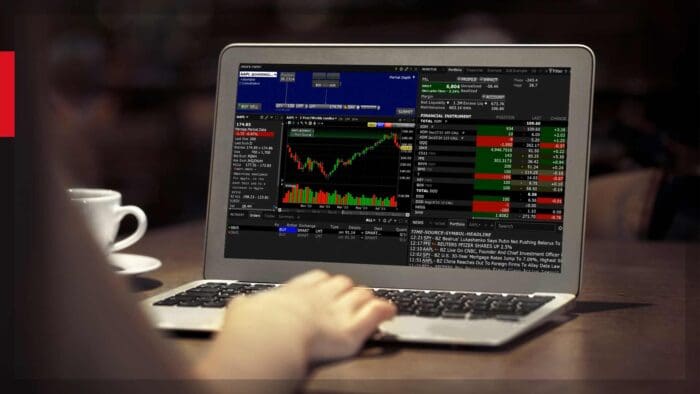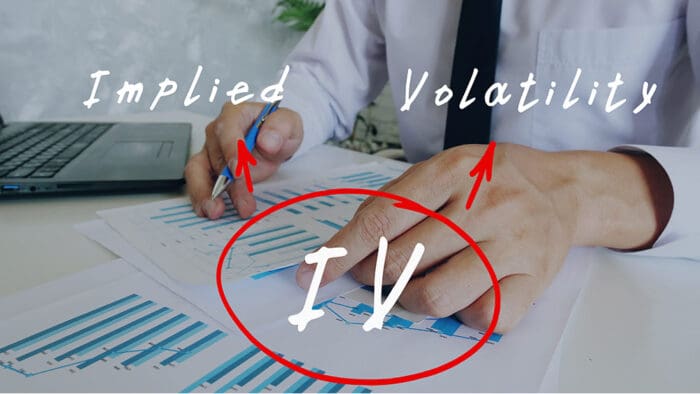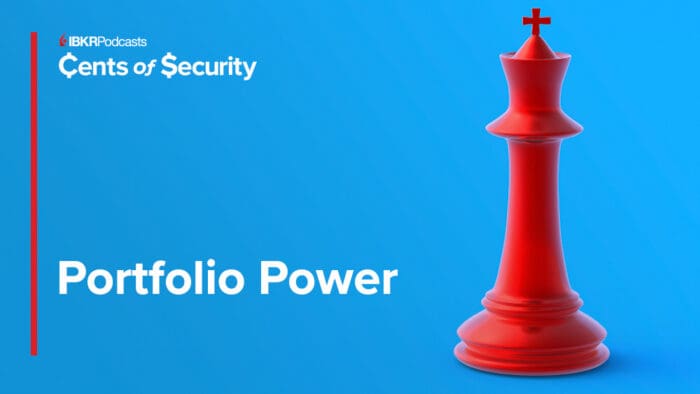By Alex Cole
1/ The Value of Momentum
2/ GoNoGo Oscillator
3/ Power of Data Visualization
4/ Apple, Inc Surging
5/ Meta Signs
Investopedia is partnering with CMT Association on this newsletter. The contents of this newsletter are for informational and educational purposes only, however, and do not constitute investing advice. The guest authors, which may sell research to investors, and may trade or hold positions in securities mentioned herein do not represent the views of CMT Association or Investopedia. Please consult a financial advisor for investment recommendations and services.
1/ The Value of Momentum
In yesterday’s article, we discussed how valuable momentum can be and how it adds a layer to your investment thesis. We discussed the important concepts of overbought and oversold extremes, as well as divergence. These ideas allow you to be aware of moments when price may have moved too far in one direction and might revert for a short time. These momentum indicators, we are told when we first study them, are to be used in range bound markets where there are clear lows and highs. We can buy and sell close to the lows and the highs using these tools.
What we learn later, is that they have immense value when a security is trending as well. Much research has been done to show how momentum oscillators tend to trade in a range when price is in a strong trend. For example, RSI may range from roughly 40 to 80 in an uptrend. This makes sense because if a trend is strong then we should expect momentum to cool but excessive selling (RSI oversold below 30) would be a concern. In this way a savvy investor can use support around 40 for opportunities to buy into a trend or even add to a position. What we also find is that these momentum indicators are fast moving, and so we may have to shift those levels for different securities or different asset classes. As you can imagine, this can introduce subjectivity back into our process. If the RSI trades down to 38 do we consider that a break of support? Or is it close enough to 40 for it to count as support? What if in a strong trend it doesn’t get below 50 even?
Look at the chart below. In this strong “Go” trend, RSI doesn’t fall to the line on the chart even once after the first touch. This line is drawn at 50, arbitrarily. We could move the line up, to try to catch the level that can be used as support. This, of course, becomes a subjective practice, and not what we want as a disciplined technician.

2/ GoNoGo Oscillator
Doing the heavy work off camera, GoNoGo Oscillator incorporates several of the most robust and well used momentum indicators into one oscillator that we add to our chart. The oscillator is calculated in such a way that when all of the inputs are in their neutral territory the oscillator produces a value of zero. In this way we can use the information we know about how momentum behaves when a security is trending. The zero line then gives us an objective level of support (in a “Go” trend) and resistance (in a “NoGo” trend). This allows us to stay with the trend, which for trend followers is so important. We are able to “let winners run” or scale into winning positions with relative safety. Look at the chart below which shows the same period of time but with the GoNoGo Oscillator in the lower panel. Look at how when the trend is strong, the oscillator finds support over and over at the zero line (white arrows). When this happens, we can confidently state that momentum is resurgent in the direction of the “Go” trend. Later in the chart, when GoNoGo Oscillator fails to find support at the zero line (red arrow), we know that there should be some concern over the health of the “Go” trend, as any kind of excessive selling does not bode well.

3/ Power of Data Visualization
Technical analysts are surely the original data visualization experts of the financial industry! Within the GoNoGo Chart we make every effort to draw the eye of the investor to important moments without cluttering up and complicating the charts. There are two icons that are placed directly in the price action.
The first are Trend Continuation Icons. These circles (green in “Go” trends, and red in “NoGo” trends) ahighlight the resurgence of momentum in the direction of a trend. In the previous section, we discussed the importance of being able to use an objective level of support for the momentum oscillator. Using Trend Continuation Icons, the chart highlights the power of GoNoGo Oscillator’s interaction with the zero line when a trend is in place. These can be excellent and relatively low risk opportunities for trend participation.
The second set of icons displayed on the chart are Countertrend Correction Icons (red arrows in “Go” trends, green arrows in “NoGo” trends). Within a “Go” trend, a security’s momentum may reach overbought levels, then fall back toward the zero-line. While in a “NoGo” trend, a security’s momentum may fall to extreme oversold levels, and then cool. As the momentum calculations retreat from extreme overbought or oversold levels, GoNoGo Icons highlight the possible countertrend correction in price. These are examples of using momentum analysis in its traditional sense of looking for price exhaustion.

4/ Apple, Inc Surging
In the chart below, we are applying both the GoNoGo Trend with icons and the GoNoGo Oscillator to the chart of Apple, Inc’s daily prices.
Apple, Inc (AAPL) had been in a “NoGo” trend since early August. At the beginning of this month we saw GoNoGo Trend paint an amber “Go Fish” bar as it rallied from the most recent low. The indicator was then able to identify a new “Go” trend with an aqua bar. One bar later, GoNoGo Oscillator burst through the zero line into positive territory confirming the “Go” trend in price and telling us that momentum was surging in the direction of the trend (Go Trend Continuation Green Circle). Now, we see that the GoNoGo Oscillator has just fallen out of overbought territory and so we see a Go Countertrend Correction Icon (red arrow) telling us that price may struggle to go higher in the short term. This doesn’t yet mean a reversal, as the weight of the evidence reminds us we are still in a strong “Go” trend.

5/ Meta Signs
In the final chart, let’s look at another security through the lens of GoNoGo Charts. The chart below shows prices of Meta Platforms, Inc (META) using weekly data. Since February, we have been in a “Go” trend that has seen long periods of strong blue bars. Over the last few months, price has moved mostly sideways and GoNoGo Trend has shown that weakness with more aqua bars. We look at the GoNoGo Oscillator in the lower panel and see that it has found support at the zero line throughout the “Go” trend. During this period of sideways price action, we see two Go Trend Continuation Icons (green circles) indicating resurgent momentum in the direction of the “Go” trend. This extra momentum, as GoNoGo Oscillator rallies off zero into positive territory, has given price the push it needs to make an attempt at a new higher high.

—
Originally posted 15th November 2023
Join The Conversation
For specific platform feedback and suggestions, please submit it directly to our team using these instructions.
If you have an account-specific question or concern, please reach out to Client Services.
We encourage you to look through our FAQs before posting. Your question may already be covered!
Leave a Reply
Disclosure: Investopedia
Investopedia.com: The comments, opinions and analyses expressed herein are for informational purposes only and should not be considered individual investment advice or recommendations to invest in any security or to adopt any investment strategy. While we believe the information provided herein is reliable, we do not warrant its accuracy or completeness. The views and strategies described on our content may not be suitable for all investors. Because market and economic conditions are subject to rapid change, all comments, opinions and analyses contained within our content are rendered as of the date of the posting and may change without notice. The material is not intended as a complete analysis of every material fact regarding any country, region, market, industry, investment or strategy. This information is intended for US residents only.
Disclosure: Interactive Brokers Third Party
Information posted on IBKR Campus that is provided by third-parties does NOT constitute a recommendation that you should contract for the services of that third party. Third-party participants who contribute to IBKR Campus are independent of Interactive Brokers and Interactive Brokers does not make any representations or warranties concerning the services offered, their past or future performance, or the accuracy of the information provided by the third party. Past performance is no guarantee of future results.
This material is from Investopedia and is being posted with its permission. The views expressed in this material are solely those of the author and/or Investopedia and Interactive Brokers is not endorsing or recommending any investment or trading discussed in the material. This material is not and should not be construed as an offer to buy or sell any security. It should not be construed as research or investment advice or a recommendation to buy, sell or hold any security or commodity. This material does not and is not intended to take into account the particular financial conditions, investment objectives or requirements of individual customers. Before acting on this material, you should consider whether it is suitable for your particular circumstances and, as necessary, seek professional advice.


















Where is this GoNoGo charting capability found within the IB charts application? I don’t see it as part of the available studies. Can someone direct me to it?
Hello Todd, thank you for reaching out. Please view this linked FAQ to see our complete list of chart indicators: https://ibkrguides.com/tws/chartindicatorstop.htm. We hope this helps!